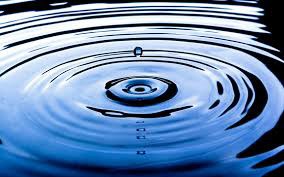Everybody is told that carbon dioxide (CO2) is changing our planet's temperature. Quite frankly this is being declared with absolutely no evidence. It’s simply foolish to believe that an increase of CO2 of five to seven parts per million in air will change the planet’s temperature.
There is a molecule that has a profound effect on the planet’s atmosphere and it’s not CO2. Nearly three- quarters of the earth is covered by this molecule. It is completely ignored by the proponents of global warming. That molecule is water. Yes, simple H2O.
This very important molecule has properties which few ever consider when it comes to what affects the temperature of our atmosphere. One must consider and understand the effects that the properties of water have on our atmosphere. If you do not, you will have zero credibility.
To come to a basic understanding of these properties, we need to examine the water cycle. A good place to begin is to consider how one feels when you get out of the shower (before drying off). You guessed it: “cold.” Not many ponder why we feel this way. To understand this phenomenon, one must only know some basic high school science.
When water goes through its phase change from a liquid to a vapour, it consumes a large amount of energy. That amount is 2,257 kilojoules per kilogram (that’s a lot).
That consumed energy creates a change of state without a change in temperature.
When you get out of the shower, the phase change of the water is occurring on your skin and the energy required to perform it is drawn from your body. The consumption of that energy by the water during evaporation results in the reduction of your body’s temperature. That is why you are chilled.
Water’s properties and its effects can and must be applied to an understanding of what is happening in the atmosphere. One aspect of our atmosphere few take into consideration is that as the atmospheric temperature rises, it can hold more water. That water is in the form of vapour.
As stated above, it requires large amounts of energy to perform this phase change. So, as with the shower illustration, the energy required comes from temperature — what a concept!
So, atmospheric temperature (energy) is consumed by water as it changes its state. And this results in a reduction of the atmospheric temperature.
It doesn’t end there.
What does warm, moist air do? It rises. As it rises, it cools, which reduces the amount of water vapour the air can hold.
How do you know this is happening? Condensation; we can see visible moisture in the form of clouds. The more water vapour in the air, the more clouds are formed as the air rises and cools.
So who cares about clouds? Well, the increase in the cloud cover over the earth reduces the amount of the sun’s energy reaching the earth. This also results in a corresponding reduction in the atmosphere’s temperature.
So, what can we conclude from some basic knowledge of the properties of water? The net effect is that water’s properties act like a thermostat for our atmosphere.
If the temperature rises, the air holds more water vapour which consumes energy in the form temperature. The vapour produces more clouds, reducing the amount of the sun’s energy reaching the earth and this results in a corresponding reduction of the planet’s temperature.
This is a basic concept, based upon several simple facts of science.
I have yet to meet a single proponent of man-made global warming who is willing to discuss real science. They use the word “science” but never use any.
Water is by far the most influential molecule when it comes to impacting our planet’s temperature.
Everyone hears about the effects of CO2 on the earth’s temperature. The news media regularly report this. Politicians make huge policy decisions based on this. But does CO2 have any role in the atmosphere’s temperature? I would argue that earth has a thermostat, but it’s not CO2; it’s H20, water.
Jim Schulz
Olds

